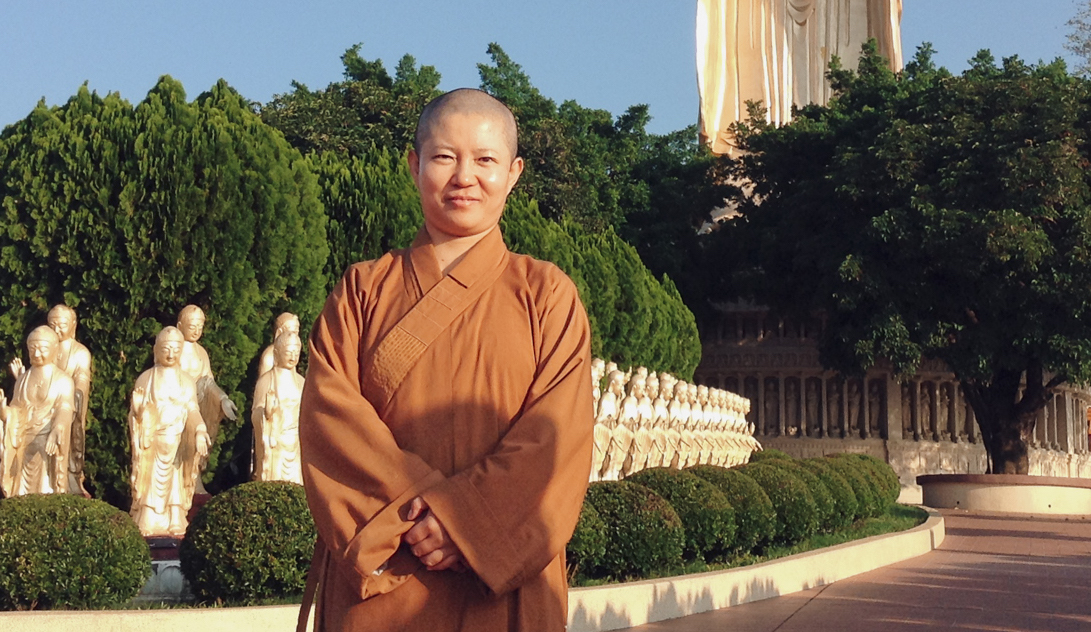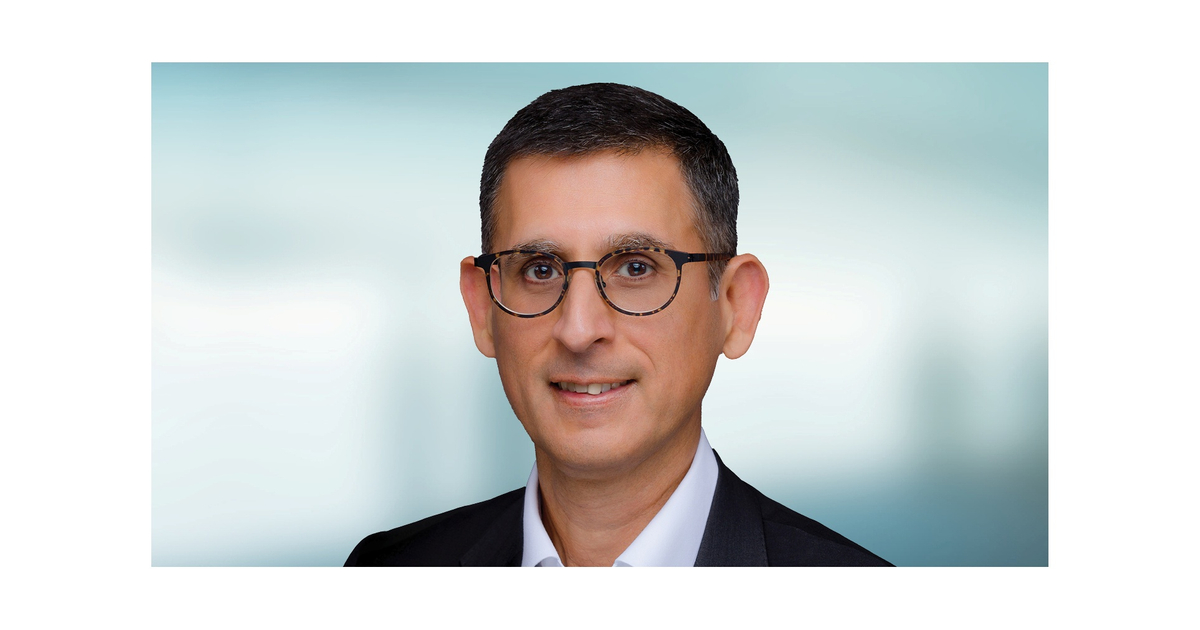Hospital Chaplain Venerable Dr. Longyun Shi Is There for Everybody
The Buddhist nun uses calming presence and guided meditations to help people of all faiths tap into their spiritual strengths The post Hospital Chaplain Venerable Dr. Longyun Shi Is There for Everybody appeared first on Tricycle: The Buddhist Review.

Venerable Dr. Longyun Shi works full-time as the oncology and ICU chaplain at Stanford Health Care. If you look at her bio on the Stanford spiritual care page, you’ll see that she is also called Ven. Zhiyun Cai. Longyun Shi is her monastic name; Zhiyun Cai is her official name. “Just call me Yun,” she says cheerfully.
This multiplicity of names is symbolic of Longyun’s abundant activity: she was the first Buddhist nun to go through full chaplaincy training in the US and has a PhD in religious studies; she’s now a board-certified chaplain and a Clinical Pastoral Education preceptor; a former hospice chaplain, she’s a researcher with a focus on Asian Perspectives on Dying and Death; she’s the abbess of the American Bodhi Sea Buddhist Association; a translator; and part of a small team bringing CPE chaplaincy training to China for the first time, with a couple thousand virtual participants.
Born and raised in Beijing, Longyun grew up with many existential questions. “When I was a child I was always wondering about life–‘Why are we born? Why are there such differences between people? I’m a good student and I study very hard but one day we all die! What will happen to all this knowledge?’ At that time I didn’t have enough spiritual guidance and I really didn’t know anyone who could help me understand. So I looked for answers in the UFO magazines I began reading in middle school. I imagined that beings from outer space could answer my questions if they wanted to. I would stand outside in the evening and invite them to make contact even though I was really scared.”
Later, while studying at college in Beijing, Longyun took a class in Asian culture with a famous lay Zen teacher named Titao Jia. For the very first time, she was introduced to Buddhism, Taoism, and other Asian spiritual paths. These classes and her professor would begin to provide the answers she was seeking and change the course of her life.
Longyun was ordained in the Zen Buddhist tradition when she was in her mid-20s. She also studied and practiced Tibetan Buddhism. Her master then sent her to immerse herself in the Theravada tradition in Thailand, where she received intensive and comprehensive dharma training for three years. (“I slept under a tree for a month!” she says.) She had a natural interest in education and visited Buddhist schools throughout Southeast Asia. Then, while pursuing her graduate degree in the US, Longyun discovered chaplaincy.
Why are you a chaplain? Everybody learns that life is impermanent, and rebirth is suffering, but what does that mean outside of the textbooks? I really wanted to put what I had learned into practice. First I thought about teaching meditation in prisons, but the local programs were in men’s prisons and I didn’t think I was ready to do that. I didn’t have the self-confidence. A senior monk suggested I might serve in a hospital. I did my CPE (Clinical Pastoral Education) internship at the Cedars-Sinai Medical Center [in Los Angeles] and it was a good fit.
Did you face any specific challenges while you were training? I think the only real challenge I had was that I love to teach people—to try to help them and fix them. That’s my personality and also my life experience. Now I recognize that when I want to fix or teach people, it puts a distance between us and I can’t effectively serve them when that distance is there. Service is only possible when we are profoundly connected at the same level.
At Stanford, are most of your patients Buddhists? No, most of the patients in my units are Catholic. I’ve been learning about other spiritual traditions at school and in my daily life, and I have a bunch of friends who are Catholic sisters. We visit and learn from each other.
I’m a single nun and I’ve been a Buddhist for over 35 years. But as a chaplain in an interfaith environment, I always remember that everybody I encounter is a future Buddha and they’re all my family members. With the bodhisattva vow we promise to serve all beings; why would I feel uncomfortable serving someone whose beliefs are different from mine? If a time comes when others want to be Buddhists, it’s their choice. In the meantime, I love apples, they love bananas—should I try to convince them that apples are better?
In the hospital you work in oncology and the ICU. Tell me something about that. Many of my ICU patients are non-verbal; they may be alert or they may be in a coma. The doctors say even non-verbal patients can often hear what’s being said to them. I talk to everybody, including patients who are unresponsive.
With a new patient, the first thing I do is introduce a sense of calm. To reduce their anxiety and build a trusting relationship, I tell them who I am, where they are, and what day and time it is. I let them know that I’m here, I’m caring for you, I’m with you.
I often do compassionate touching. I’ll talk them through it: “Jennifer, I’m putting my right hand on your right shoulder.” I’ll let the patient know that she is very important, not only for her family, but also for everyone here who is caring for her. I’ll also normalize her feelings: “Jennifer, you’re hospitalized and you’re worried about many things. You’re concerned about your two-year-old. Your worry is normal.”
How does mindfulness inform your spiritual support of someone at the end of life? It will depend on their religious beliefs. Often, we’ll focus on the breath or I might say, “Can you draw your attention to the Holy Name you like to recite?” If people have no religious preferences, or if it’s too difficult to focus on the inhale-exhale, I may ask them to settle their attention on the body instead. If they can’t feel their bodies, I’ll say, “Okay, do you know you’re lying on a bed? Place your attention on the bed.”
I might put my hand on their shoulder and ask if they can feel it. If they can, I’ll encourage them to settle their attention on that spot. If they’re able to pay attention to certain places in the body like that, it reduces anxiety. I also use music to help them relax—I’ll put my phone by their ear and invite them to simply pay attention to the music. When people are dying it’s difficult for them to concentrate, and music can lead to a peaceful death.
I try to help people connect with their inner peace and strengths regardless of their faith. No matter what their religious beliefs are, as it says in the Pali canon, if they are free from worries and fears at the end of life, they go on to a good place. That’s what I’m working on—helping them be free from worries and fears so they can get to the place they want to go, no matter where that is.
I once had a patient who was homeless. He had been raised Catholic but felt he had been abandoned by God. I asked him, “Where can we find your strength?” “From a tree,” he said. He told me that the only person he believed in was his grandma who had died 20 years ago, and her spirit was in that tree. “She’s the only one I trust. Not God, not family—they all abandoned me. So that’s where I slept: under that tree.”
He described the tree, so I went and found it and brought him a picture of it. “Is this your tree?” “Yes! I love this tree! When I see the picture I see my grandma and I feel strength.” I didn’t talk to him about how wonderful God is, or how God is love, like I do with some patients. No, for him it was that tree; the tree was able to connect him to his inner peace and strength. When he looked at it and we prayed together, he felt love. We prayed to the tree in the picture until he died, and he died really peacefully. It happened seven years ago and I still remember it clearly.
Some patients’ health improves so they can go home and continue their lives. Is there something they take from their encounters with you that will stay with them? I believe so. For example, self-compassion. In the hospital, patients are often struggling and thinking about the uncertainties of the future, and I’ve found that many of them don’t have enough self-compassion. Self-care and self-compassion aren’t selfish. Many oncology patients are depressed, worry about being a burden, and lack self-care. They share the love with others, but not with themselves.
Sometimes we don’t love ourselves because we haven’t forgiven ourselves. We don’t remember that as human beings we all make mistakes. I often teach patients self-forgiveness and self-compassion meditation. The metta sutra begins with this, right? May I be well, and then we move on to everyone else. I designed a simple interfaith self-compassion cue card because I can’t always be with them, so after meditation I leave a card on the table as a suggestion to be mindful of this.
A Self-Compassion Meditation from Venerable Dr. Longyun Shi
1. Take a very comfortable posture. Calm the mind and focus your attention around your chest area, your “heart center.” Breathe in and out from that area.
2. Generate warm, gentle, loving feelings for yourself:
May I be safe from harm.
May I be happy just as I am.
May I be peaceful with whatever is happening.
May I be healthy and strong.
May I care for myself in this ever-changing world graciously, joyously.
3. When you finish, please gently open your eyes.
Thank you. Is there anything you’d like to add? I feel that chaplaincy training has really been good for my personal practice and I hope that more Buddhists will receive it. Through these programs we can truly benefit others—in a hospital, for instance, we benefit patients and staff—but the first person to receive the benefits is you. During chaplaincy training and service, with the blessings of the buddhas you’ll recognize your growing edges and challenge yourself, and you can make great progress. It’s amazing!

 Tekef
Tekef 
























.jpg&h=630&w=1200&q=100&v=6e07dc5773&c=1)


.jpg&h=630&w=1200&q=100&v=f776164e2b&c=1)




